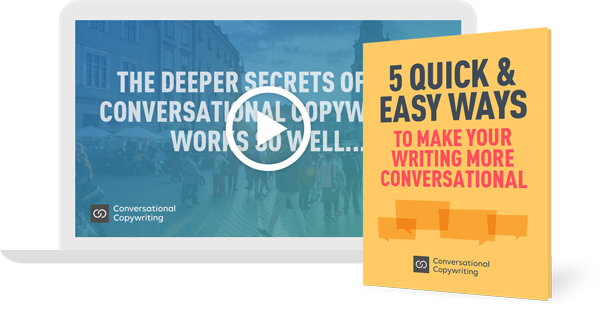
Earlier this week I was doing a livestream Q&A session with students of the Conversational Copywriting course.
I think I handled most of the questions reasonably well. A question would come in and I’d dive in with my answer.
And then someone asked me about how to write conversational headlines, and I started doing a lip-flapping fish imitation. And yes, it mattered, because I was on live video!
Anyway, I had no answer but said I’d think about it and report back.
Consider this my report.
I think a conversational headline is an open-ended headline.
For example, the headline to this post is open-ended. It’s a question.
As a question, it invites engagement. It invites the reader to consider a possible answer.
Here’s another headline as a question:
So you think you know the best places to eat in Cancun?
That’s a question and also mildly provocative. A bit of a challenge. As a result, it invites a response. It’s inclusive… it’s like the opening salvo in a lively conversation.
Here’s another example, but without a question.
I thought I’d be better at this by now.
Well, that’s a little intriguing. Better at what, exactly? I guess the topic of the website would provide a clue or two. If it was a gardening site, we could assume the writer thought he would be better at some activity relating to gardening.
The point being, the headline includes the reader because it’s missing so much information. There’s an implicit invitation to keep reading and then fill in the gaps in the headline for yourself.
When your headline is open-ended, it invites the reader to take part. And that, my friend, is step one in starting a conversation.
When headlines are NOT conversational.
These are headlines that leave no space for the reader to participate.
Like…
Experts agree the pour-over method is the best way to make coffee.
OK. The writer told me what experts think. That’s that then. No room for discussion or conversation.
The headline is closed. Not inclusive. Not conversational.
But what about this one… is it open or closed?
3 Things you MUST NOT DO when grooming your dog.
In one sense it’s open-ended because it tempts you to keep reading and find out what those 3 things are. There is intrigue there. An unanswered question.
But… it’s kind of pushy and bossy too.
It doesn’t feel like the author is open to discussion. So, not much of a conversational feel to it.
And the answer is…?
I don’t think there are any black and white rules when it comes to what constitutes a conversational headline.
I think it’s more of a rule of thumb thing. More subjective than rule-based.
But here’s how I make my own judgment…
I ask myself whether it feels like the headline leaves space for the reader.
If the headline feels too closed, too strident or too pushy, then there is no space left over and, in my view, the headline isn’t conversational.
And, of course, if you do succeed in writing a conversational headline, that’s just step one.
When your readers get into the text of your post or page, the sense of inclusion and openness has to continue, from beginning to end.
That’s my sense. How about you? What do you think?
Conversational Copywriting is the future of selling online. You can build your expertise now, or try catching up later. Find out about the course here…
